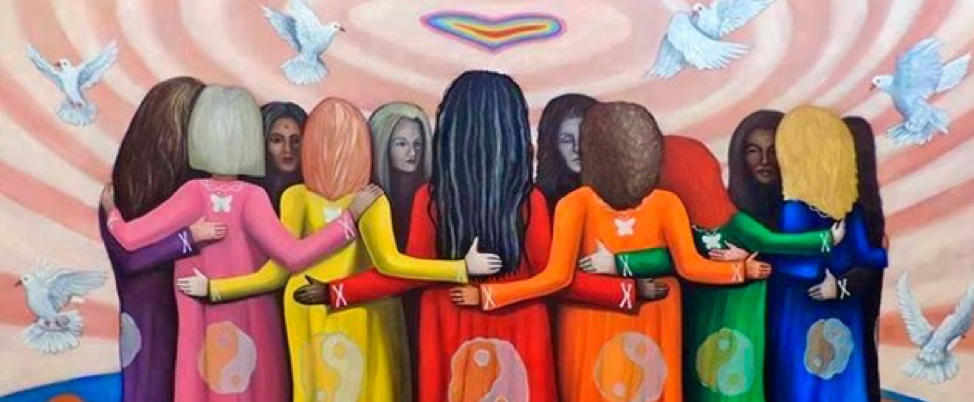In the previous entry on our series introducing Hispanophone Buddhism, we covered Montse Castellà Olivé, founding president of the Spain chapter of Sakyadhita. Sakyadhita is commonly known as one of Buddhism’s most prominent women’s advocacy and research organizations.
Since 2020, Sakyadhita Spain has hosted ten “circles of practice,” known in Spanish as círculo de práctica de mujeres budistas hispanohablantes. As this article notes, the purpose of practice circles “is to strengthen bonds between Buddhist women from different traditions, share experiences and meditate together. Each circle consists of one part in which ideas are discussed and shared about a main theme related to women and Buddhism, and in the other part, a joint meditation practice is carried out, guided each time by a teacher or practitioner from a different tradition.” The circles of practice were launched in April 2020, and in December 2020, Sakyadhita Spain hosted the 2nd International Symposium of Spanish-Speaking Buddhist Women, titled “Dharma-Gaia: Buddhism, Women, and the Climate Crisis.”
This milestone conference was covered by both BDE and BDG, as it was held in both English and Spanish. On BDG, our veteran columnist, Tilly Campbell-Allen, has covered several of the major talks of this event, including the talks by Jetsunma Tenzin Palmo, Rev. Joan Halifax, and the Kung-fu Nuns of Ladakh. Readers of Spanish can also enjoy articles on Joan Halifax, the Kung-fu Nuns, and Ven. Karma Lekshe Tsomo about their lectures at the conference.
Despite being held online in the midst of the pandemic, this was a landmark event that set the agenda for the community of Hispanophone Buddhist women. Montse was not only able to connect the Hispanophone community of Buddhist women with some of the most famous female figures of Western Buddhism, like Joan Halifax and Tenzin Palmo. The result was a “bridge” built out of ecumenical goodwill, solidarity with sisters in the practice of Buddhism in a world still defined by patriarchy, and also, critically, an honest and constructive comparative study of Hispanophone and Anglophone Buddhist priorities. Indeed, one idea put forward to the next Sakyadhita Spain conference was to have a meeting between Buddhist women from the various Spanish-speaking countries, in order to strengthen ties of sisterhood and mutual love.
The last point deserves re-iterating: “Western Buddhism” is a term that is misleading for two reasons. Firstly, in all the decades of its existence, it has always meant, often implicitly, Buddhism in English-speaking countries (perhaps France got an honorable mention, but both it and Spain have never been truly counted in this definition of Western Buddhism). Secondly, even if the world of Hispanophone Buddhism might have some overlap with American Buddhism, such as mindfulness meditation, it also has drastically divergent priorities to Buddhists in the US or Canada. Everything is global, but everything is also local, and it is critical for Buddhist leaders, writers, and scholars to be mindful of how cultural and historical context can result in different Buddhist priorities.
Montse understands this acutely, especially in relation to Buddhism in Spain and Latin America. While the two share some degree of cultural heritage, they have developed into different societies, with Latin America being even more diverse. Montse has worked hard to promote an inclusive vision and comprehensive strategy that brings women of all traditions and cultural or national backgrounds together, while also allowing everyone to be themselves and fulfil their own vocations. One such voice was Ven. Damcho, a Virginian-born teacher that puts feminism and ecological activism at the forefront of her compassionate practice: in recent years, these two words have been combined to form “eco-feminism,” a philosophical recognition that women’s (and men’s) wellbeing and that of the planet and the natural world cannot be separated.


